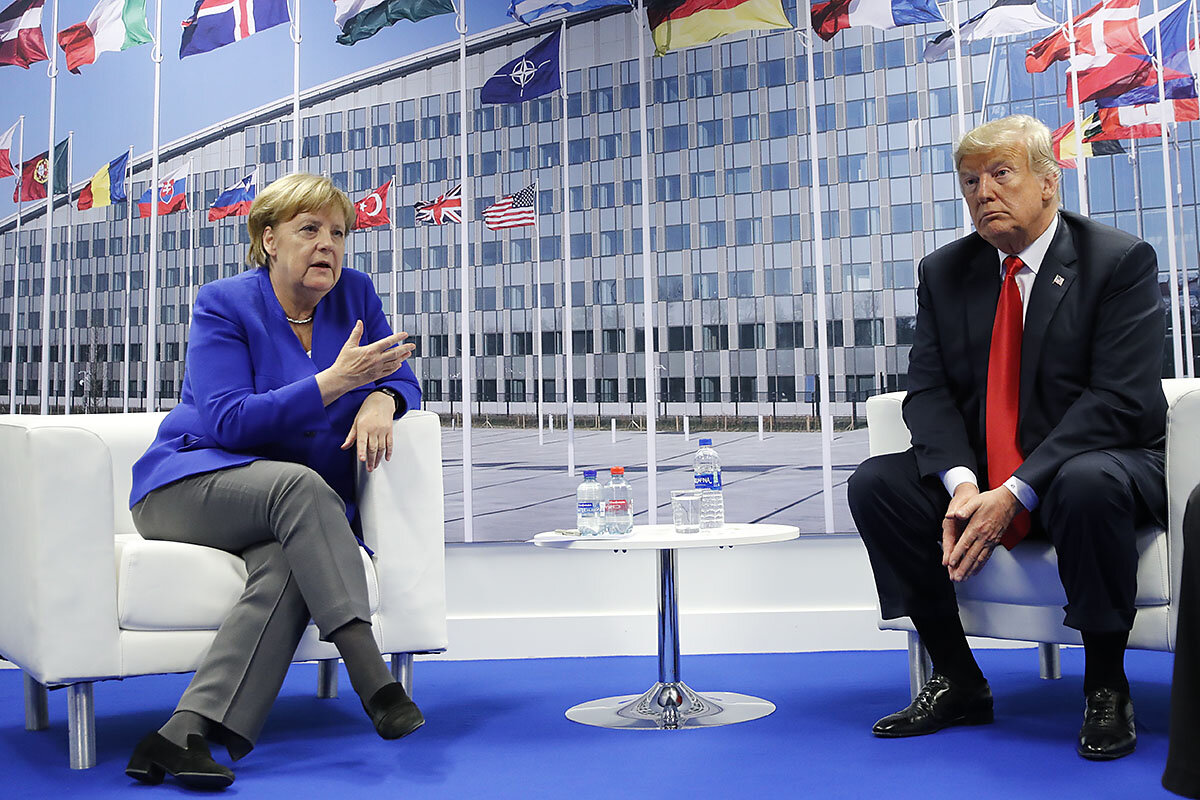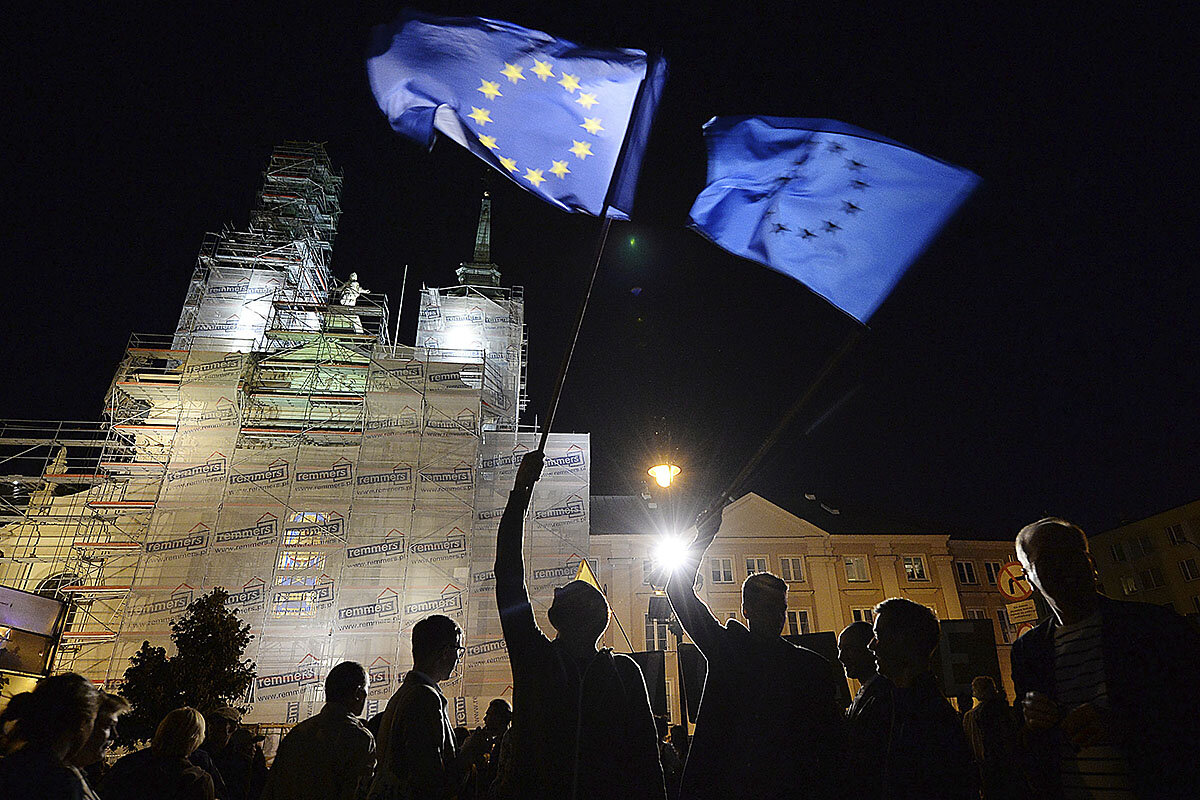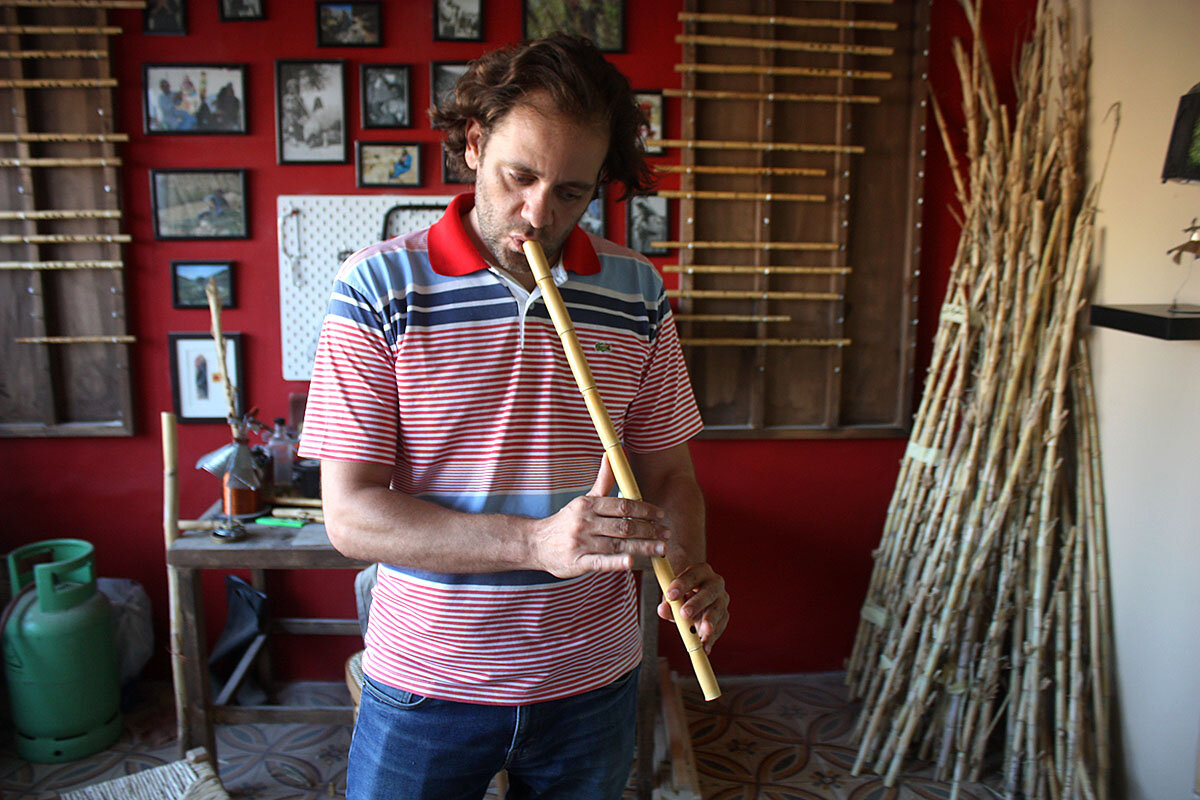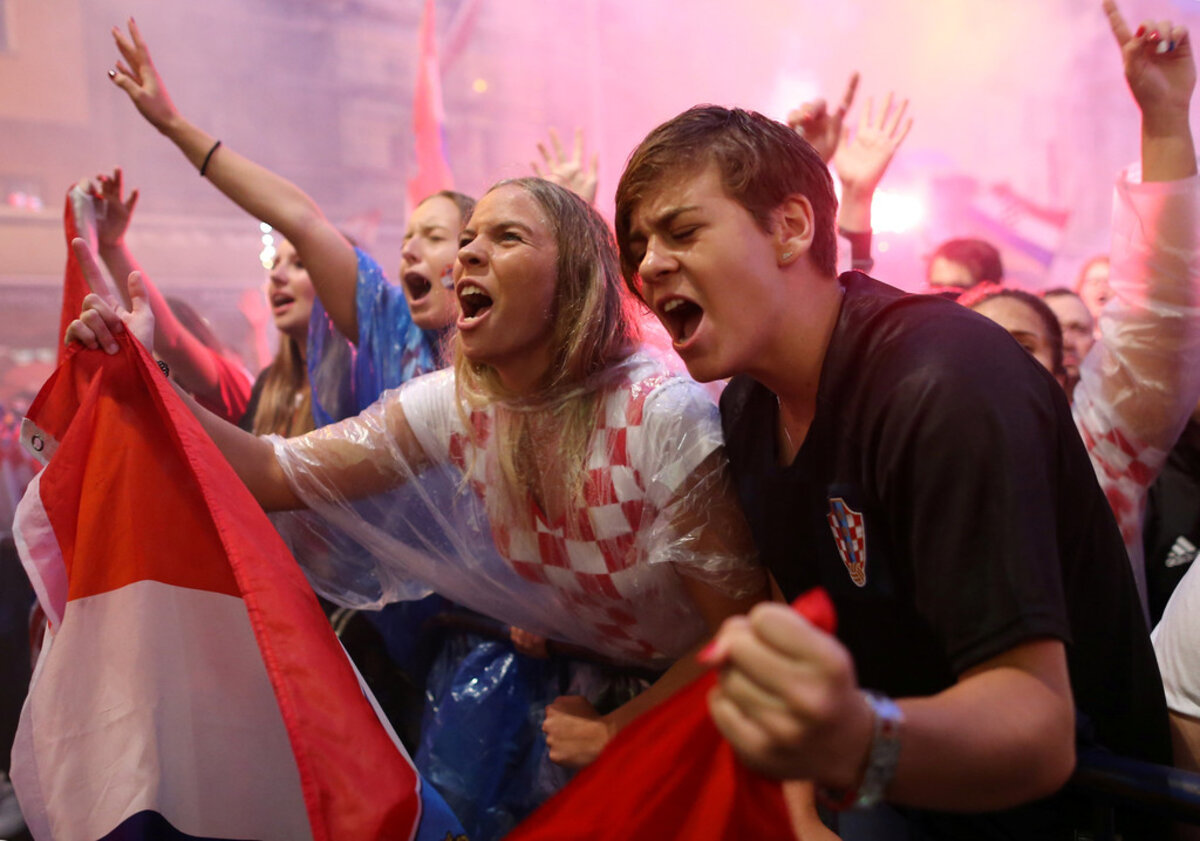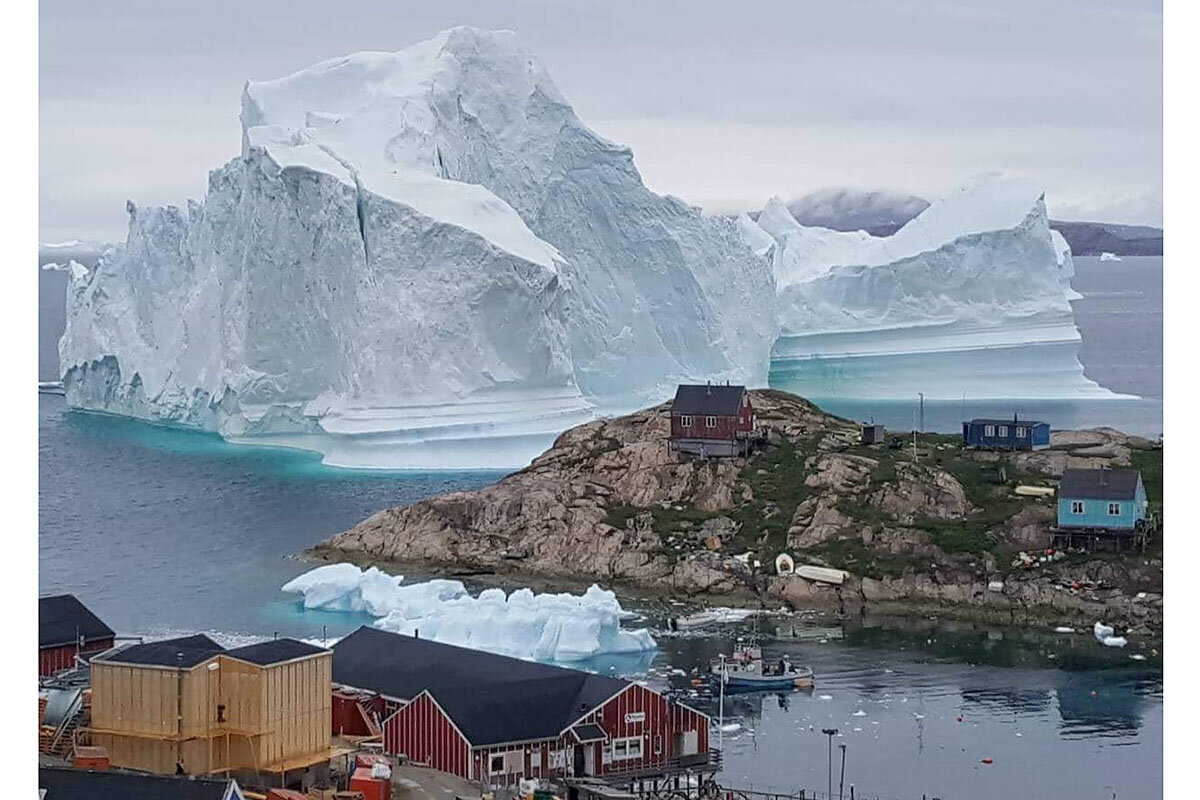In Trump's interactions with NATO allies, the blunt talk, often-poor chemistry, and awkward optics grab headlines. But the underlying dichotomy of US policy goals in Europe has a familiar ring.
Monitor Daily Podcast
- Follow us:
- Apple Podcasts
- Spotify
- RSS Feed
- Download
 Clayton Collins
Clayton Collins
Recent days have produced a squabblers’ trifecta.
We’ll get to the stir around US-Europe diplomacy in a minute. On Capitol Hill, a House committee hearing descended into chaos. And in a literally more juvenile setting, Build-a-Bear Workshops had to shut down a pay-your-age promotion after it triggered hordes of budget bear-builders.
Draw the curtain over all of that.
What do the Thai cave story (which ended this week) and the World Cup saga (which will end Sunday with cheering in Paris or Zagreb) have in common? Both have refugees from conflict at the heart of mostly happy outcomes.
Croatian team captain Luka Modric grew up amid shelling by Serbs during the Balkans breakup in the early 1990s. The family home destroyed, his grandfather killed, young Luka fled with surviving relatives to the coast and threw himself into soccer. He excelled, making his way to the pro game, first with a Croatian team, then in the English Premier League and with Real Madrid. Now he leads his homeland’s team in a reach for the Cup.
Adul Sam-on, who along with his Wild Boars soccer teammates endured weeks in a watery cave in northern Thailand, showed a different kind of stardom: drawing on his proficiency in languages to interpret for British divers who found the boys. Adul, born stateless, had been taken to Thailand by his parents from a part of Myanmar torn by drug violence and guerrilla warfare. He’s a student now, and at the top of his class.
We’re following news of the indictment, by special counsel Robert Mueller’s team, of 12 Russian intelligence officials for a “sustained effort” to hack into US computer networks. It comes two days before President Trump and President Putin are scheduled to meet in Helsinki, Finland. Read our first take here. Watch for further analysis on Monday. Now to our five stories for your Friday.




